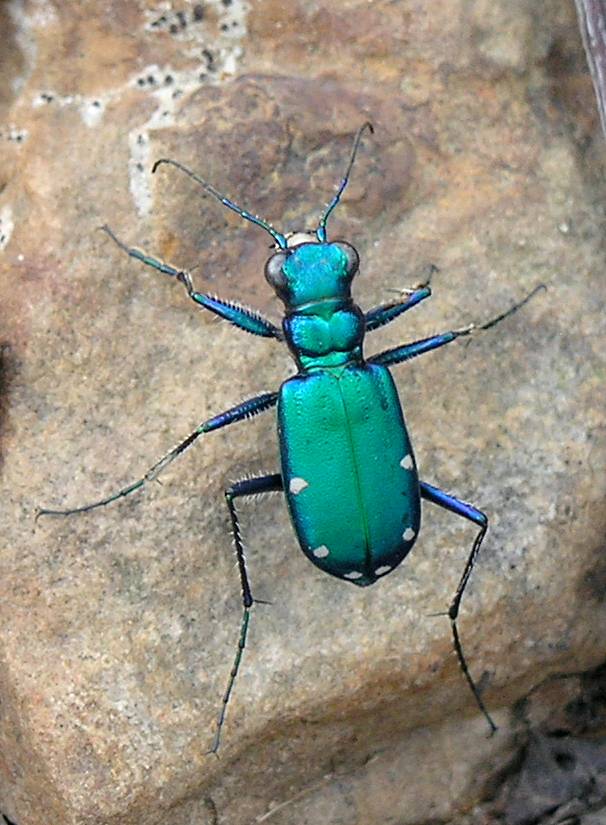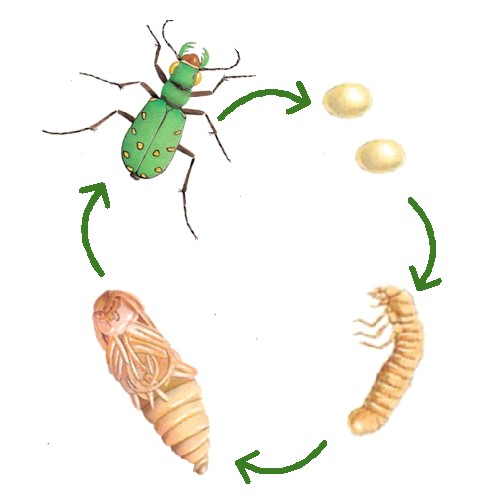The Green tiger beetle (Cicindela campestris) is a striking ground-dwelling beetle known for its metallic green sheen and ferocious predatory behavior. Native to Europe but with several North American relatives (e.g., Cicindela sexguttata), this beetle belongs to the family Carabidae within the order Coleoptera (Figure 1). It is commonly found in dry, sandy habitats, including heathlands, grasslands, forest edges, and open trails, where it can run fast and hunt effectively.

Figure 1. Adult Green Tiger Beetle (Photo retrieved from https://commons.wikimedia.org/wiki/File:Cicindela_sexguttata_Fabricius_1.jpg).
Life Cycle and Behavior
Green tiger beetles undergo complete metamorphosis: egg, larva, pupa, and adult. Females lay eggs in loose soil, where larvae construct vertical burrows and lie in wait for prey. Larvae have large mandibles and a characteristic humped shape with hooks on their backs to anchor themselves in their burrows. Tiger beetle larvae feed on other invertebrates that they can capture in their burrows in the soil. The larval period may last up to four years, depending on the species and conditions. The pupa does not feed and is the transitional stage between larva and adult. Pupation lasts three or more weeks. Adults emerge in spring and summer and are most active on sunny days. They are fast runners and excellent flyers. Adults feed on just about anything they can see and catch, including invertebrates that may be larger than themselves.

Figure 2. The various life stages of Green Tiger Beetle: egg, larva, pupa, and adult (illustration created by Skarleth Chinchilla and inspired by Q-Files – Online encyclopedia 2025).
Predatory Skills and Diet
Green tiger beetles are active hunters and consume a wide range of small invertebrates, including ants, spiders, caterpillars, and other ground-dwelling arthropods. They use their powerful mandibles to seize and kill prey. Both adults and larvae help control insect populations naturally.
Habitat and Conservation
These beetles thrive in open habitats with loose, sandy soil that allows for easy burrow construction and rapid movement. They are sensitive to habitat disturbance. Some of the key practices to conserve their population include maintaining patches of native vegetation, minimizing pesticide use, and preserving sandy areas. Green Tiger Beetles are considered an indicator species for healthy ecosystems due to their sensitivity to changes in habitat structure and pesticide exposure.
Fun Fact
Despite their small size (about 12–15 mm), Green Tiger Beetles have such sharp vision and speed that entomologists sometimes refer to them as the “cheetahs” of the insect world. Look around, they are already out and on the hunt!